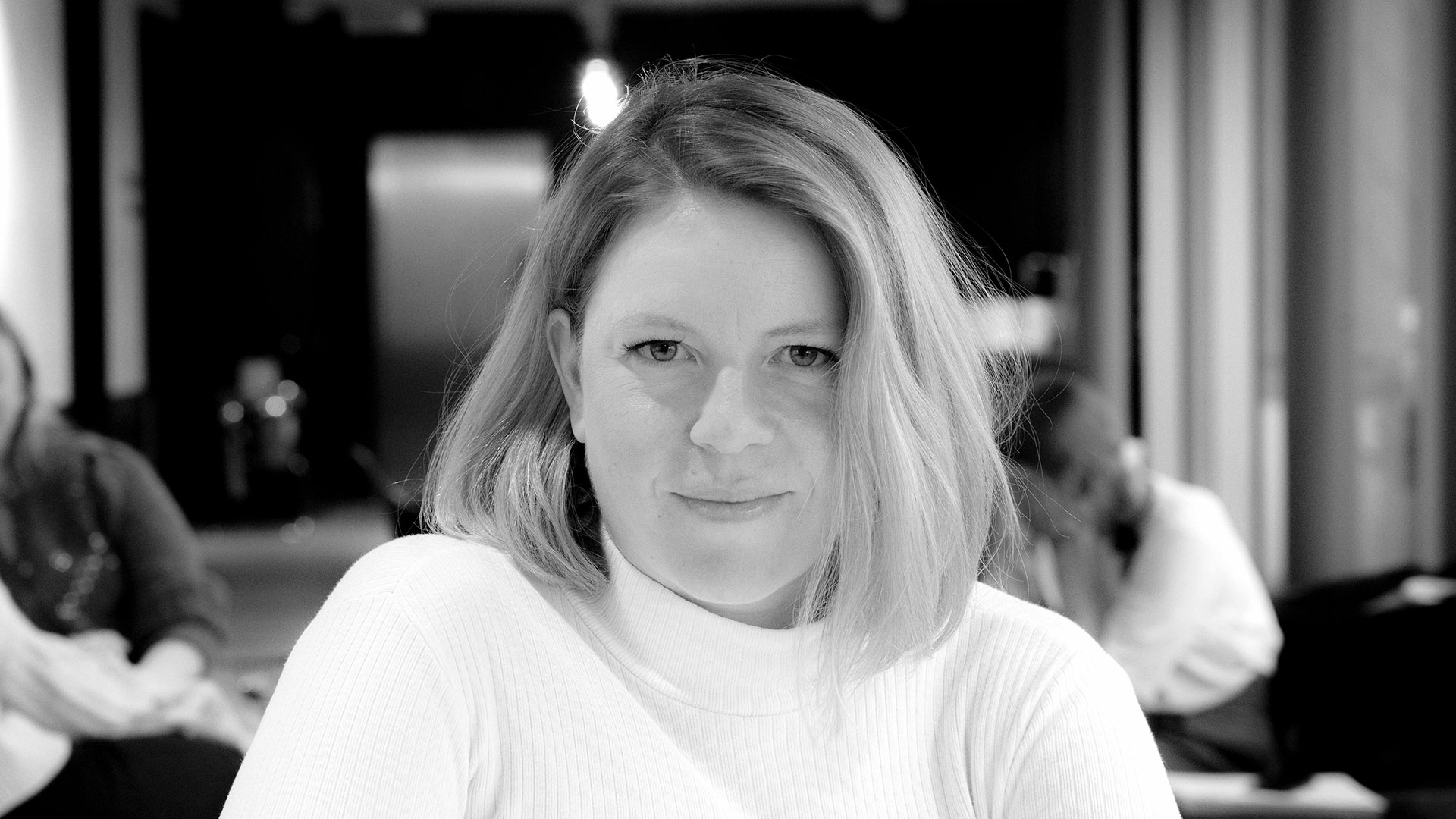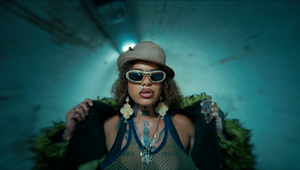
Anna Fogg: “The Metaverse Has Given us a New Creative Layer to Explore”

Virtual Production is a hot topic, and one which garners extensive attention and questions. In collaboration with LBB, Unreal Engine is sponsoring the ‘Virtual Production’ channel, where we will be speaking with some of the industry’s most forward-thinking and innovative minds to explore some of the biggest questions surrounding this new way of working.
As Virtual Production continues to evolve, it does so alongside the industry-wide conversation regarding The Metaverse. Given the potential for crafting immersive and intricate digital worlds, what does this mean for how brands should approach their Metaverse strategies? And why is it essential to have a strategy for the Metaverse in the first place?
To find out, LBB caught up with The Mill’s global strategic director Anna Fogg. In their own words, The Mill has set out to “create cultural moments through virtual, augmented and physical experiences”, and sees The Metaverse as a core pillar of that strategy. To reflect on what’s now possible, what it means for the future of connectivity and culture, as well as how brands can prepare, we spoke to Anna…
LBB> To start with the very basics, what is The Metaverse? Or, in other words, where does today’s established digital world end and The Metaverse begin?
Anna> That is the big question.
*Draws an enormous breath*… The Metaverse is a collective term for a global network of interconnected digital experiences and applications, devices and products, tools and infrastructure where people, brands, places, and activities will be able to have a persistent virtual presence.
In simpler terms, it’s the next generation of the web and social in real-time. But there are two main shifts: user agency and persistence. It is a virtual space where I can go to discover new things, new products, new experiences, and new people.
One vision of The Metaverse is the recreation of the world we already have in virtual form. This means that every part of our world will need to be realised. The market, the currencies, the workforce, the houses, the friendships, the restaurants, the art, the music. Elements of all of these exist currently, with the main difference being that they are not currently interoperable as the infrastructure of our world is. They are accessed via different platforms, different devices, and different applications. Within each of these we may already have a digital presence. An account, or a login, or even an avatar. We may have used an AR lens, attended a virtual gig, bought a piece of digital clothing for an avatar. We are already accessing a nascent version of The Metaverse.
In terms of where our digital world ends, as you ask, the short answer is that it won’t. We will continue to develop our digital personas as we continue to access new platforms, new activations, and new worlds. The principle change will be when a majority are accessing just one world, in just one place. Think Ready Player One Oasis: a space in which we exist and interact as one. In this light, games like Fortnite are an early version of this, and hence they will definitely be part of The Metaverse.
LBB> What kinds of things can brands do within the Metaverse which are impossible- or more difficult - than with other forms of marketing? Have there been any stellar examples which have stood out to you?
Anna> First, brands can bring masses of people together from totally different geographies. They can create a brand world or experience that every single person on the planet can explore at the same time. This is definitely different. The power of a single global moment is huge. I would add that it’s not 100% the marketing that’s changed, but the marketing landscape. Events, promotions, launches – these have always been part of a brand’s marketing mix. It’s just now that the scale and creativity of such things are completely unbound. A layer of imagination has been added that has generated a new creative layer to explore.
In terms of an example, I have to mention our work alongside Riot Games Music for the Pentakill gig. Forty-five minutes of motion-captured musical mayhem featuring Riot Games’ seven-strong virtual metal band, Pentakill, playing their new concept album in real-time, captured by 40+ virtual cameras and created by over 70 world-class digital artists and creative technologists. It’s never been done before.
Above: The Mill collaborated with Riot Games Music to bring an immersive album experience to life for Pentakill - a band tied to the League of Legends universe.
I also really liked the work that Balenciaga has been doing. Fashion brands in general are really pushing the boundaries. It’s a tad old in Metaverse terms, but Balenciaga Afterworld I thought was a real step ahead of the game. Incredibly creative, interactive, innovative, crazy, beautiful. Everything we think true fashion should be.
Above: At the end of 2020, fashion brand Balenciaga released its fall collection in the form of an immersive video game named Balenciaga Afterworld.
LBB> Some people refer to The Metaverse as ‘Web 3.0’. What does that mean, exactly?
Anna> If 2.0 was Social, Web 3.0 is the next iteration of the web. Based on blockchain technology, designed around the user, and decentralised.
LBB> In order for a brand to be able to ‘enter The Metaverse’, do they need to create their own Metaverse from scratch?
Anna> No. Much like the advent of Social, we saw different platforms create the Social web. These enabled us to communicate and share peer to peer. These platforms then began to support different consumer behaviours and interactions. Brands within these platforms were able to experiment, communicate with, and engage audiences in a multitude of ways.
Likewise, there are a number of platforms that currently exist within The Metaverse: Decentraland, Fortnite, and Roblox (for instance). These enable brands to interact directly with their audience without the necessity of building an entirely new platform. They can build characters, events, moments, and activations that live within these platforms. The shift with The Metaverse is that brands can also create activations and interactions that live beyond these platforms, accessed via Web or AR or VR. Unique interactions that bring their audiences into a shared immersive experience.
LBB> In your view, what would be the easiest way for me - or any marketer - to get to grips with the Metaverse? Are there any platforms, or even video games which I could play around with which would give me a clearer idea of how it works?
Anna> I would definitely suggest downloading Roblox, accessing Decentraland, and having a play around in Fortnite. I would also sign up for a virtual gig or two, try on some virtual sneakers, window shop some digital fashion, and see if you can get your hands on a headset and check out one of the many branded VR experiences. I think a combination of these would give you an idea of the many different ways you can access The Metaverse, the diversity of experiences, and the expanse of creative ways to engage audiences.
LBB> And what should marketers be looking to do within the Metaverse right now?
Anna> I think it’s a time to experiment and play with the mindset of still exploring the role of your brand in the Metaverse. How can your brand tap into these experiences you are engaging in?
At The Mill we’re working with a number of brands to define where to begin and where best to engage audiences. Bringing together key strategic questions on audience behaviours, and aligning these with brand purpose and tech maturity. So experimentation for sure, but it’s certainly not too early to understand where and how to play.
LBB> I understand that you are particularly interested in the makeup of fan culture. Do you think that the Metaverse might change the way that fandoms form and interact with one another? If so, how?
Anna> Interaction is the key. As Social Media shaped the way we interact with each other, how we interact with media platforms and news itself, Web 3.0 and the different organisms within it will shift our interaction once again. Fan cultures are developed off the back of shared moments: information sharing and live interaction. Gaming, sports, fashion, music - they all can provide shared moments which occur in real-time. Fans can share, play, socialise, and interact around these moments creating subcultures and fandoms that exist in the moment. The impact of 5G and the growth of immersive and shared experiences will allow these fandoms to connect instantaneously. As Social Media has greatly sped up global movements and enabled trends born out of grassroots and subculture genres, I’m sure we will continue to see this grow. The power of the audience lies in creating fan culture, demanding authentic and creative interactions, and pushing new and extraordinary moments into being.
LBB> Finally, it currently feels as if there are a lot of different visions for how the Metaverse could - and should - work. Personally, what’s most exciting to you about the potential of the Metaverse?
Anna> The level of creativity and imagination. I think this is particularly pertinent now. With any new technology or media, we see a level of creative freedom and expression that I think has real potency. The rules of good marketing and brand engagement don’t change, but the scope for creative thinking and innovation are up for total reinvention.










